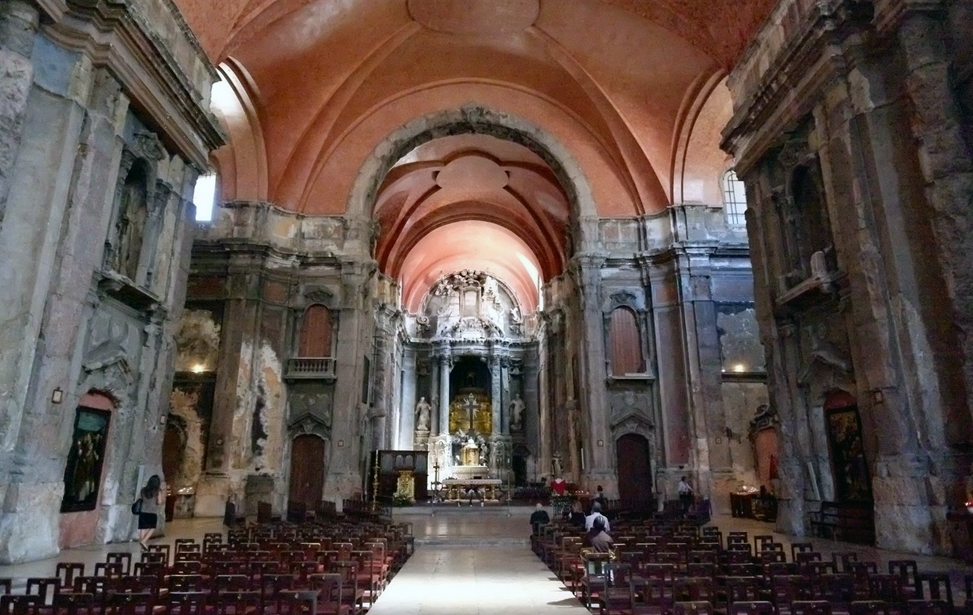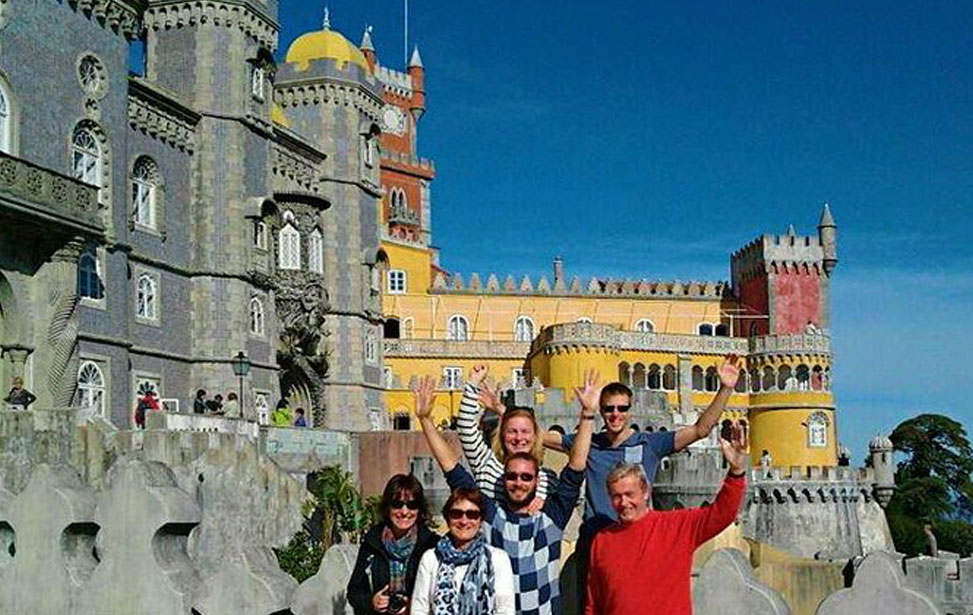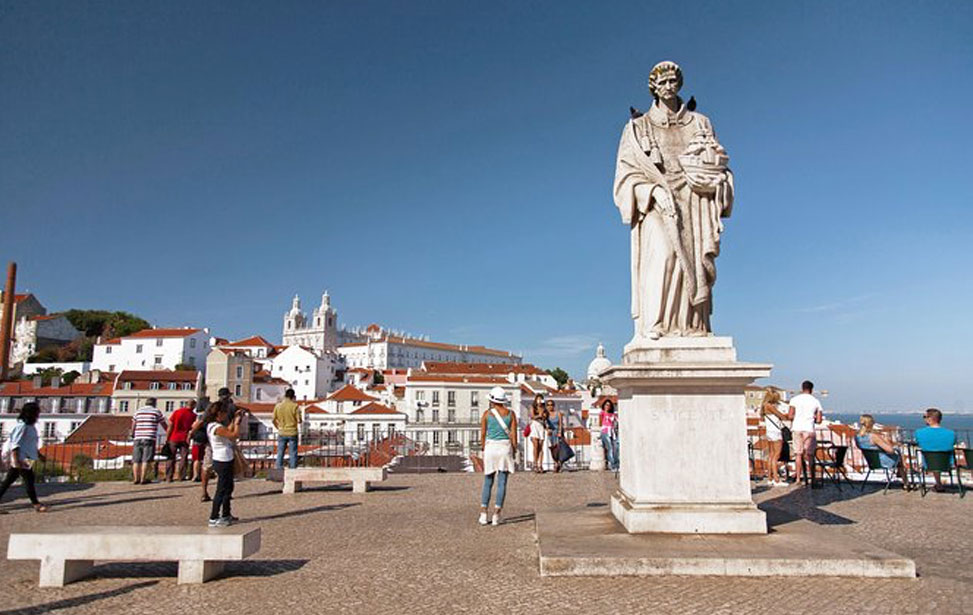
History
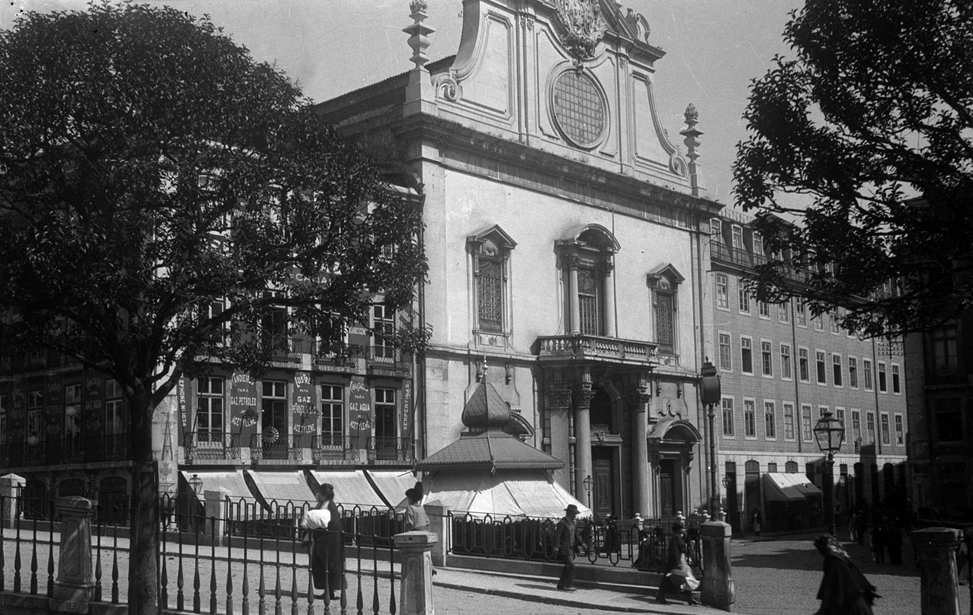
In 1755 ill fate struck the church again, along with most of Lisbon, during the massive earthquake which reduced much of the city to rubble. The quake occurred on the morning of the 1st of November, All Saints Day, and the church was full of worshipers. Only the sacristy and altar survived but the rest had to be rebuilt in the years that followed. Although rebuilding started soon after the work wasn't completed until 1807. It was during these restorations when the church acquired its Baroque appearance.
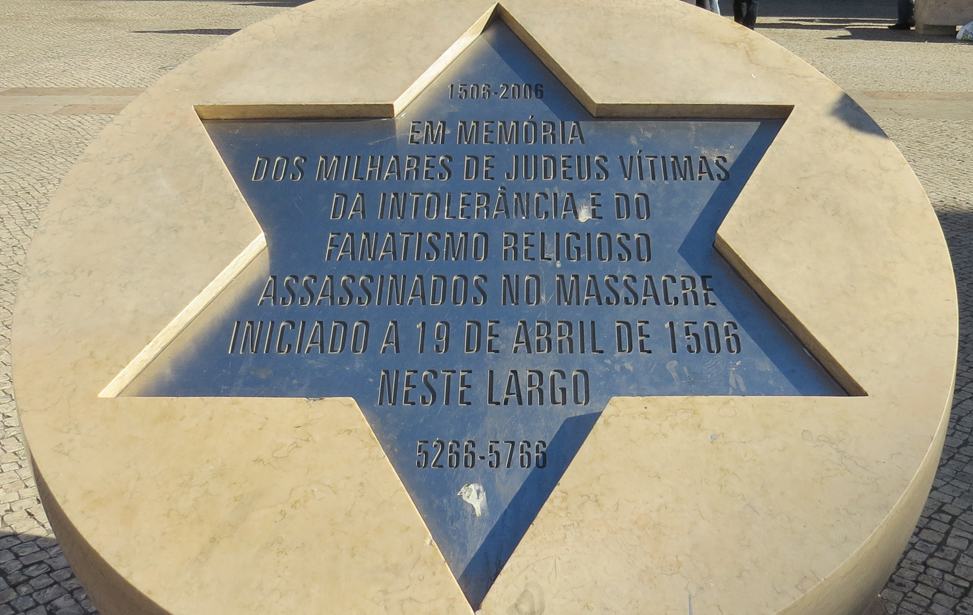
The Interior
The inferno caused marble and stone to buckle and crack leaving the massive stone pillars fractured and scorched. The floor now broken and uneven, statues missing limbs, the absent gilded altars, blackened orange walls and macabre depictions of the crucifixion all add to the sombre effect. Worthy of deeper inspection however is the red marbled high alter depicting the Holy Trinity and the sacristy, which is the former resting place of the remains of King Afonso III.
Daily: 07h00 - 19h00 | FREE
Largo de São Domingos, 1150-320, Lisbon, Portugal.
38º 42' 53.5" N | 09º 08' 20.2" W
+351 213 428 275 | Website
Outside this amazing church is the meeting place for Lisbon's African community. In 2008 a monument was installed in the square inscribed with the words "Lisbon, the City of Tolerance" in 34 languages in honour of victims of the 1506 massacre. There's plenty of eateries and cafés in the vicinity including the famous A Ginjinha bar where you can sample Ginja, a local cherry liqueur.
Getting to the São Domingos Church
| Much of the Baixa district is pedestrianised but it can be reached from the North on the Avenida da Liberdade, East and West on the N6 (Avenida 24 Julho). | |
| Rossio Square: 709, 705, 737, 708 | |
| Rossio Square: 15, 28 | |
|
Alfa Pendular and Intercity trains, inter-regional and regional trains (connections to the North and South of Portugal are available), and the Azambuja line (Lisbon-Azambuja). Alight at Rossio. Trains of Portugal Website |
|
| Rossio Station on the Green line Line |



 Lisbon Card Discounts
Lisbon Card Discounts


